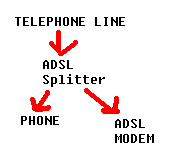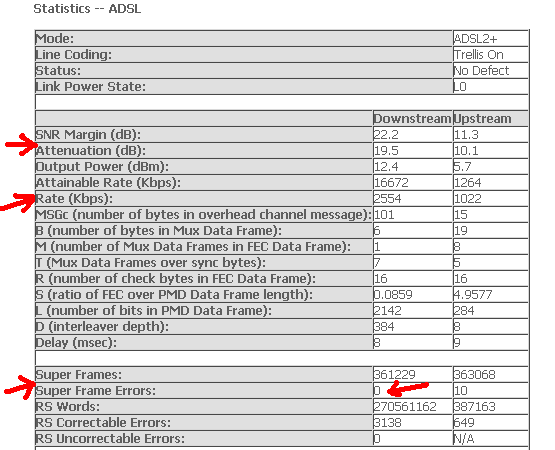I have been facing this dreadful problem in the past few days with my BSNL internet connection. The worst thing is the DSL is very unstable (blinks frequently) and disconnects very often and most cases i cant even work for 5 minutes. Whenever the DSL becomes unstable, i have often noticed that the SNR margin (signal to noise) goes less than 8db and at times even negative. Plus i have noticed more than 100 superframe errors which i believe arent supposed to happen! The phone line is just ok but i did hear`crack crack` line noise and
I realised after a frustating night, the culprit was faulty ADSL splitter which induced a lot of noise in the line. Be careful that most cheap splitters are not good quality and may amplify the line noise. After consulting with phone technician i was asked to replace the phone line and the new splitter.
If you face any problems, the culprit may be well near you like faulty adsl splitter or a faulty telephone cable.
Troubleshooting
To successfully fix the problem follow the steps.
1. Take out your phone cable out of modem and plug into your phone and see if you can hear phone dial tone properly. DSL lights may not blink or become unstable if you have faulty phone line or have lot of noise in it.
2. Double check the ADSL splitter and this is the most common cause of internet problems. Go to electronic store and buy it and see if that works. It just costs about $1 and may well solve all your problems.

3. To check the statistics of the connection, login to your modem/router using http://192.168.1.1/ or http://192.168.168.1/ using your login and password and check the DSL connection statistics

If you see lot of super frame errors, then surely the packets are getting lost in the transmission. Below is a very short guide on the numbers involved.
SNR Margin (Signal to Noise Ratio Margin) – You have to watch out for SNR Margin (usually in 20’s) and if it is too low you may get disconnected often.
Line Attenuation – It measures loss of signal over distance and its value in 20’s means excellent
SNR Margin
A higher signal to noise ratio will result in less errors.
- 6bB. or below = Bad – experience intermittent synchronisation problems.
- 7dB-10dB. = Fair
- 11dB-20dB. = Good
- 20dB-28dB. = Excellent
- 29dB. or above = Outstanding
Attenuation Rates
Attenuation is the loss of signal over distance. Unfortunately, dB loss is not just dependent on distance. It also depends on cable type and length of the cable, including location other connection points on the cable.
- 20bB. and below = Outstanding
- 20dB-30dB. = Excellent
- 30dB-40dB. = Very Good
- 40dB-50dB. = Good
- 50dB-60dB. = Poor and may experience connectivity issues
60dB. and above = Bad and will experience connectivity issues

